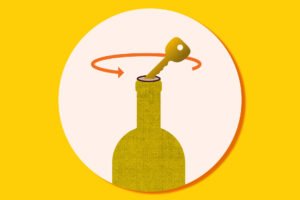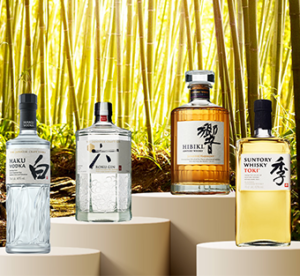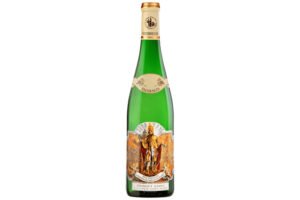What Is the Difference Between Organic and Biodynamic Wine?
[ad_1]

Organic and biodynamic wines both begin in the same place as any other wine: with grapes growing in a healthy vineyard.
With eco-friendly trends on the rise in the world of wine, you’ve likely at least heard of organic, or biodynamic, wine. Maybe you’re curious to try one, or maybe you simply want to expand the horizons of your knowledge as a wine enthusiast. Perhaps you’re wondering if these wines would make a profitable addition to your investment portfolio.
But just what is the difference between organic and biodynamic wine, and how do they compare to wines that lack these labels?
In this post, we’ll cover what makes a wine organic or biodynamic, explore a few prime examples of each, and discuss what special considerations—if any—need to be taken into account when collecting these types of wines.
The Difference Between Organic and Biodynamic Wine, Explained
To answer the question, “What is the difference between organic and biodynamic wine?” let’s begin by taking a closer look at what each of these labels means.
What is organic wine?
Organic wine derives from grapes grown without the use of synthetic fertilizers, herbicides, or pesticides. Organic wines also contain no added sulfites (All wines contain naturally occurring sulfites, but some vintners add to these during the vinification process.). Additionally, all of the wine’s ingredients—not just the grapes—must be certified organic as well.
Organic wines differ from wines that merely claim to use “certified organically grown grapes.” These wines can, and often do, contain added sulfites and other non-organic ingredients that prevent them from claiming the “organic wine” label.
To qualify, and legally advertise, a wine as “organic wine,” a winery must fulfill a long list of requirements set by their home country’s governing body of agriculture. The U.S. Department of Agriculture (USDA) or the ECOCERT in Europe are two such organizations.
What is biodynamic wine?
Biodynamic wine, like organic wine, emphasizes organic ingredients and processes. However, biodynamic wines place an even heavier emphasis on the interconnectivity of living organisms, the Earth, and our solar system.
Biodynamic farming practices, pioneered by Austrian philosopher Rudolf Steiner in the 1920s, utilize an astronomical calendar to time the different stages of farming: harvesting, pruning, watering, and allowing the vineyard to rest. Each of these stages is also associated with one of four elements—earth, fire, water, and air.
The majority of biodynamic wines also qualify as organic wines. However, this is not always the case. Certified biodynamic wines are allowed up to 100 parts per million of sulfites—far more than most countries’ standards for organic certification allow.
Biodynamic wine certifications are largely overseen by Demeter International (which represents 45 countries worldwide) or Biodyvin (which represents European wineries only). Just like a certified organic wine, you can easily identify a biodynamic wine by an official seal from either of these governing bodies on the wine label.
The Main Differences Between Organic vs. Biodynamic Wines
Both organic and biodynamic wines strive to employ eco-friendly farming practices and use organic ingredients. Organic wines, however, do not contain added sulfites, while some biodynamic wines might.
The farming practices for biodynamic wines, on the other hand, follow much stricter and more complex guidelines than those required for official organic certification. Biodynamic wineries tend to take a more holistic approach to winemaking, deeply considering how cultivation practices both affect and are affected by the environment as well as various astronomical factors.
Organic growing and winemaking are popular in the U.S., while biodynamic practices are more common in Europe. And, unlike organic wines, biodynamic wines are certified according to the same standards worldwide.
Organic and Biodynamic Wines and Producers
Below, we’ve listed a few of our favorite organic and biodynamic wineries—along with some specific wines to try from each.
As you peruse this list, keep in mind that the certification process for organic and biodynamic wines can be lengthy and complex. As a result, some wineries skip certification entirely but still claim to pursue organic and eco-friendly growing and vinification processes. Domaine Leflaive is one such example.
A certified wine will be the safest bet in terms of authenticity and may resell for a better price. However, if you are especially interested in supporting organic and biodynamic wine practices, you may wish to look beyond officially certified wines—just be sure to investigate these wineries thoroughly before making a purchase.
Organic and Biodynamic Wines vs. Conventional Wines
Now that we’ve explored the difference between organic and biodynamic wine, the next question on many collectors’ minds is: how do these wines compare to conventional wines?
Many enthusiasts do claim that organic and biodynamic wines taste better than the alternatives. The theory behind this is that because these vineyards tend to yield grapes in fewer bunches, the flavor is more concentrated. Avoiding chemicals throughout the growing and winemaking process may also play an important role in determining flavor. However, the difference is typically a subtle one.
Another factor to note is that a lack of added sulfites typically reduces a wine’s longevity—making organic wines and most biodynamic wines shorter-lived than their conventionally vinified counterparts.
Organic wines and biodynamic wines also tend to be more expensive to produce, and their shelf prices are a little higher than average. This does not necessarily translate to a high resale value, however.
Organic and biodynamic wines used to suffer from a poor reputation, one they are still shaking off despite the many high-quality wines produced today. The Return on Investment (ROI) for these wines will depend as much on your buyers’ interest in eco-friendly practices as it will on the wine quality. Choosing a selling platform that will connect you with your ideal buyers is, therefore, crucial to making the most of your investment.
In the end, the question of whether any of these wines are the “best” is open to interpretation. Your answer to this question will depend on your priorities. If you’re looking for a high-end wine investment, conventional wines may still have the advantage for now. If you’re looking to go greener, organic and biodynamic wines could be preferable.
And if you just want a wine you know you will enjoy, ignore the labels. Choose your wine based on your personal preferences, using your own tasting notes and those of professionals with similar preferences as your guide.
Whether you are starting your high-end wine collection or adding to an established portfolio, Vinfolio is your partner in buying, selling, and professional storage. Contact us today to get access to the world’s finest wine.
[ad_2]




